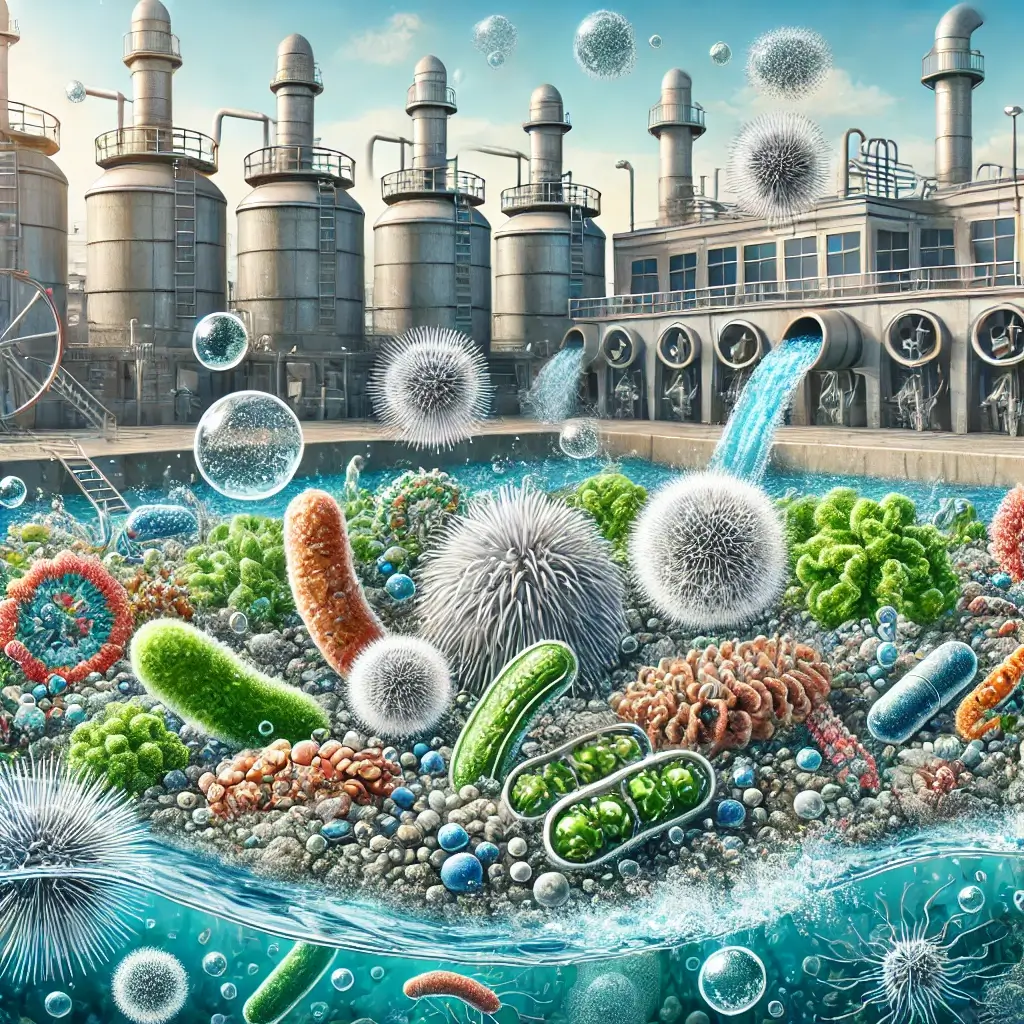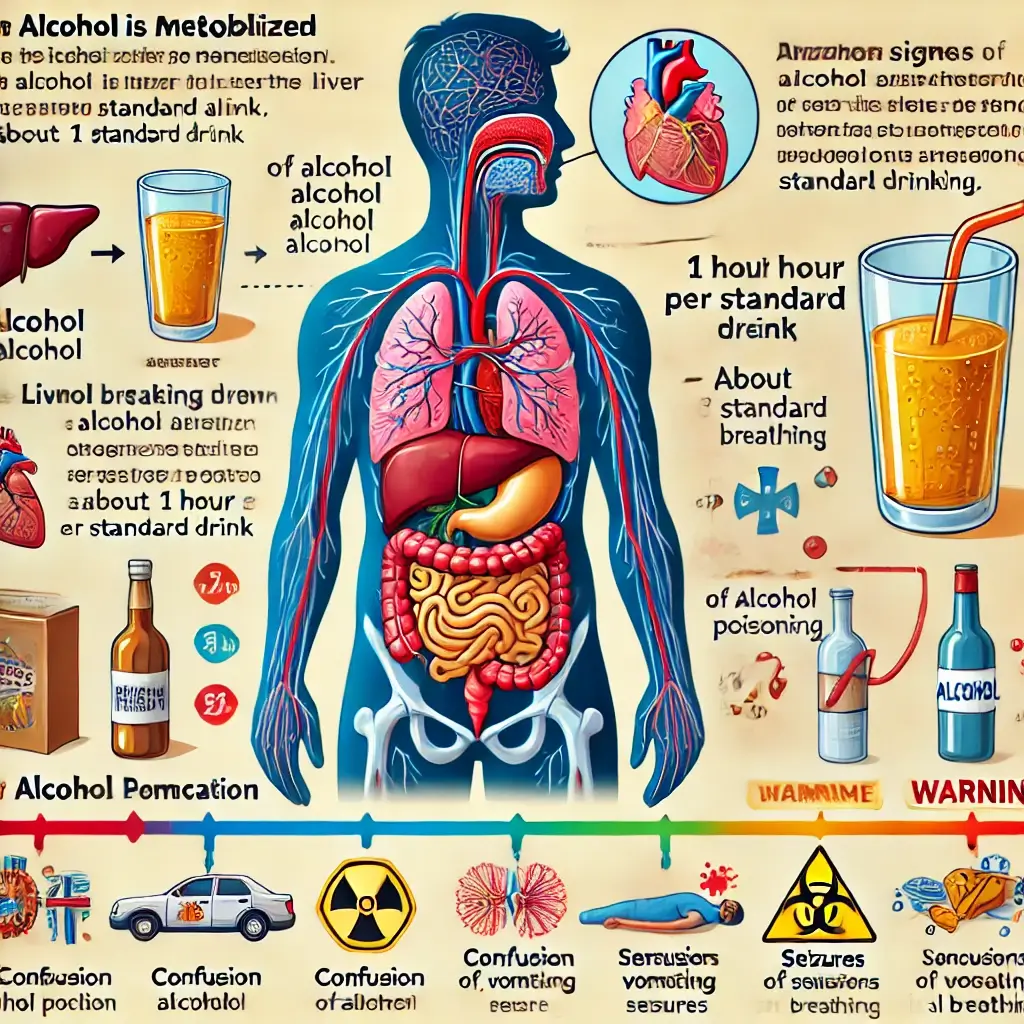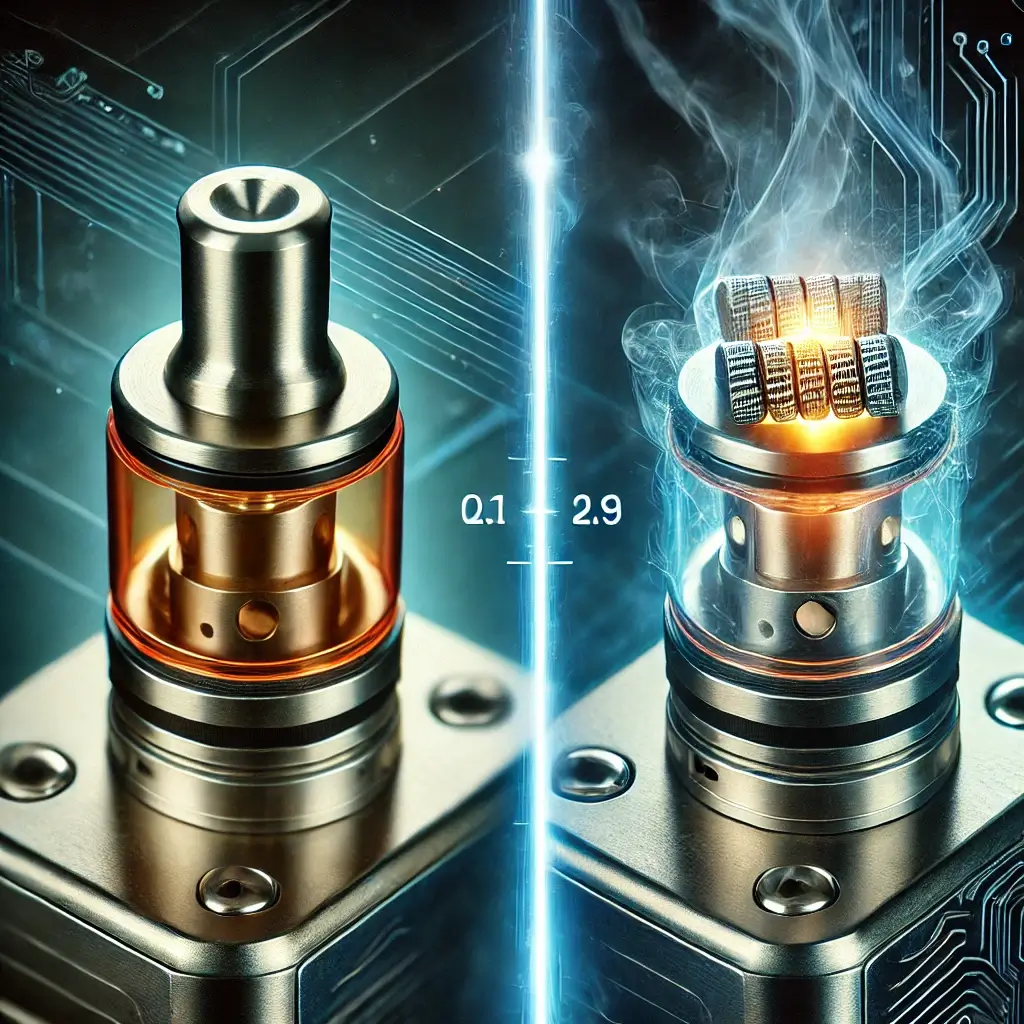what organisms break down chemical wastes in a treatment plant?
what organisms break down chemical wastes in a treatment plant?:Wastewater treatment facilities are critical for keeping the environment healthy by treating industrial and sewage waste. But what do you think about what organisms break down chemical wastes in a treatment plant? These tiny life forms are the wastewater workhorses that go unnoticed. They come in forms such as bacteria to fungi and spend their days decomposing toxic chemicals so that water can be safely discharged or reused.
In this article, we will discuss what organisms break down chemical wastes in a treatment plant?, how they work, and why they are important in sustaining ecological balance. If you ever wondered about the chemistry behind wastewater treatment, read on to learn about the interesting world of microorganisms and how they help clean up our water.
Understanding Chemical Waste Breakdown in Treatment Plants
Before going into what organisms break down chemical wastes in a treatment plant?, one must recognise how wastewater treatment operates. Wastewater treatment flora are engineered to do away with contaminants together with natural material, heavy metals, and poisonous chemicals. The technique usually entails physical, chemical, and organic treatment stages.
The biological treatment section is wherein microorganisms shine. These tiny life bureaucracies spoil down complex chemicals into easier, non-toxic substances via biochemical reactions. But what organisms break down chemical wastes in a treatment plant? Let’s discover.
Bacteria: The Primary Decomposers in Wastewater Treatment
1. Aerobic Bacteria
Aerobic bacteria are some of the most critical microorganisms that ruin down organic and chemical wastes. Aerobic microorganisms want oxygen to live to tell the tale and are typically found in activated sludge systems.
Nitrosomonas: It oxidizes ammonia to nitrites.
Nitrobacter: It oxidizes nitrites to nitrates.
Pseudomonas: Assists in the degradation of complex organic compounds and detoxification of toxic substances.
Aerobic bacteria are very important in the process of nitrification, an important step in minimizing harmful nitrogen compounds in wastewater.
2. Anaerobic Bacteria
Anaerobic bacteria are different from aerobic bacteria as they grow in oxygen-free conditions and are mostly located in anaerobic digesters in wastewater treatment plants.
Methanogens: Produce methane and carbon dioxide from organic matter.
Clostridium: Ferments organic matter into simpler compounds.
Desulfovibrio: Assists in the reduction of sulfates to sulfides.
Anaerobic bacteria are very beneficial in sludge digestion and biogas production, which can be used as a source of energy.
Fungi: The Secondary Decomposers
Fungi are also essential in what decomposes chemical wastes in a treatment facility. While bacteria decompose simpler organic molecules, fungi have the capability of decomposing more complex organic molecules, even industrial waste molecules.
Aspergillus: Fungi can degrade hydrocarbons and harmful chemicals.
Penicillium: Assists in decomposing organic pollutants.
Trichoderma: Facilitates decomposing cellulose waste.
Fungi are very useful during the secondary treatment phase when they serve to eliminate hard-to-degrade pollutants that remain resistant to attack by bacteria.
Protozoa: The Built-In Predators
Protozoa aid wastewater treatment by preying on undesirable bacteria and dead organic matter. These microorganisms enhance the total efficiency of biological treatment.
Amoebas: Engulf and digest bacteria, maintaining balance among microbial numbers.
Ciliates: Assists in decomposition of organic refuse by consuming bacteria and detritus.
Flagellates: Facilitate the degradation process by regulating bacterial growth.
Protozoa, by feeding on bacteria, ensure a balanced microbial population in treatment plants.
Algae: Oxygen Suppliers in Wastewater Treatment
Although not usually regarded as decomposers, algae are crucial in wastewater treatment as they supply oxygen, which sustains aerobic bacteria.
Chlorella: Removes heavy metals and aids in oxygenation.
Scenedesmus: Assists in nutrient cycling and serves as a food source for other microorganisms.
Spirogyra: Enhances water quality through the elimination of excess nutrients.
Algae-mediated wastewater treatment is increasingly popular because it is sustainable and effective in eliminating chemical contaminants.
Actinomycetes: The Link between Bacteria and Fungi
Actinomycetes are filamentous bacteria with similarities to fungi. They are important in decomposing complicated natural chemicals, inclusive of medicinal pills and industrial chemical substances.
Streptomyces: Breaks down toxic chemicals using enzymes.
Nocardia: Facilitates decomposition of petroleum-derived pollutants.
Micromonospora: Helps degrade biodegradable plastics.
Actinomycetes are particularly useful in tackling recalcitrant pollution that other microorganisms discover tough to degrade.
Role of Microorganisms within the Degradation of Chemical Wastes
Having hooked up what organisms break down chemical wastes in a treatment plant? t, allow's now observe why they're so vital:
Control of Pollution: These microorganisms contribute closer to the reduction of environmental pollution through degradation of toxic substances.
Cost-Effective Treatment: Biological remedy is cheaper as compared to chemical or bodily remedy.
Energy Production: Certain microorganisms are worried in biogas production, that is a source of renewable strength.
Eco-Friendly Process: Microbial degradation is a herbal and green system compared to chemical treatments.
Efficient Waste Management: Microorganisms facilitate efficient treatment of industrial and municipal waste.
Challenges in Microbial Waste Treatment
Microorganisms in wastewater treatment plants, though useful, have a number of challenges:
Toxic Overload: Excessive levels of pollutants can be toxic to beneficial microbes.
Temperature Sensitivity: Microbial activity is impacted by extreme temperatures.
Oxygen Levels: A balance of oxygen is necessary for efficient microbial operation.
pH Fluctuations: Abnormal pH shifts can interfere with microbial communities.
Heavy Metal Contamination: Toxic metals for microorganisms decrease the efficiency of treatment.
Mitigation of these problems guarantees that the microbial community can effectively degrade chemical waste.
Conclusion
So What organisms break down chemical wastes in a treatment plant? The answer is bacteria, fungi, protozoa, algae, and actinomycetes. These microorganisms collaborate to decompose toxic chemicals and organic matter, and wastewater becomes safe for the environment.
Knowing what organisms break down chemical wastes in a treatment plant? is important to realizing the biological mechanisms that make our water clean. As wastewater treatment technology continues to advance, using these microorganisms will continue to be crucial for sustainable waste treatment.
The next time you're curious about what organisms break down chemical wastes in a treatment plant?, keep in mind the small but mighty life forms working behind the scenes to ensure our water supply.
20 Facts & Myths: What organisms break down chemical wastes in a treatment plant?
Facts
Bacteria are the major chemical waste decomposers in treatment plants.
Aerobic bacteria need oxygen to decompose organic matter effectively.
Anaerobic bacteria operate in oxygen-free conditions to decompose waste.
Fungi assist in decomposing complex pollutants that are difficult for bacteria to digest.
Protozoa consume bacteria and organic waste, regulating microbial balance.
Algae assist in oxygenation, helping aerobic bacteria in wastewater treatment.
Actinomycetes are filamentous bacteria that decompose toxic industrial chemicals.
Methanogens form methane gas as anaerobic digestion by-product.
Nitrifying bacteria reduce ammonia to nitrates, and water toxicity decreases.
Treatment plants utilize a combination of microorganisms for maximum performance.
Treatment plant microorganisms minimize water pollution through decomposition of dangerous substances.
Efficiency in breaking down microbial wastes may be hindered by fluctuations in temperatures.
pH level is very essential in treatment plants to maintain the activity of microbial communities.
Elevated heavy metal levels kill useful bacteria.
Fungi such as Aspergillus and Penicillium assist in the biodegradation of petroleum-derived pollutants.
Actinomycetes play a critical role in degrading pharmaceutical wastes.
Phytreatment of wastewater using algae is an eco-friendly option becoming increasingly popular.
Bacteria multiply quickly to ensure proper wastewater treatment.
Oxygen levels are to be properly maintained to favor aerobic bacteria.
Protozoa serve as natural predators to curb excessive bacterial growth.
Myths
Myth: Wastewater treatment plants utilize chemicals only to treat water.
Fact: Microorganism-based biological treatment is of significant importance.
Myth: All bacteria in wastewater are harmful.
Fact: Most bacteria are harmless and play a vital role in decomposing waste.
Myth: Fungi have nothing to do with wastewater treatment.
Fact: Fungi assist in degrading complex organic pollutants.
Myth: Anaerobic bacteria are more efficient than aerobic bacteria.
Fact: Aerobic bacteria tend to decompose waste more effectively.
Myth: Bacteria alone decompose chemical waste.
Fact: Algae, fungi, and protozoa also play a role.
Myth: Microorganisms in treatment plants are man-made.
Fact: They are naturally occurring.
Fact: Microbes are natural and are grown for treatment.
Myth: Algae in treatment plants pollute water.
Fact: Some algae species remove pollutants and release oxygen.
Myth: Protozoa in wastewater treatment are parasites.
Fact: Protozoa are mostly useful and clean water.
Myth: Chemical treatment is better than biological treatment.
Fact: Biological treatment is cost-effective and more sustainable.
Myth: Wastewater treatment removes all contaminants.
Fact: Wastewater treatment removes some contaminants.
Myth: Wastewater treatment plants only produce clean water.
Fact: They also generate sludge and biogas.
Myth: Microorganisms are incapable of degrading heavy metals.
Fact: Heavy metals can be absorbed and detoxified by certain bacteria.
Myth: Microbes in all treatment plants are genetically modified.
Fact: Treatment plants mostly use naturally occurring microbes.
Myth: Wastewater treatment plants smell awful due to bacteria.
Fact: The right treatment suppresses odors.
Myth: Treatment plant water is safe to drink without additional purification.
Fact: It generally needs additional treatment to be safe for drinking.
Myth: All fungi used in wastewater treatment are harmful.
Fact: Helpful fungi assist in the breakdown of poisonous materials.
Myth: Microorganisms are not needed by treatment plants.
Fact: Microbial action is required for successful breakdown of wastes.
Myth: Wastewater treatment is a new process.
Fact: Microbial processes have been in use for hundreds of years.
Myth: Microbes in treatment plants are killed by chemical waste.
Fact: Most microorganisms are able to survive and grow in extreme conditions.
Myth: Microbial treatment is used only by large treatment plants.
Fact: Microbes are even used by small-scale and domestic treatment systems.
20 Q&A About What Organisms Break Down Chemical Wastes in a Treatment Plant
1. What organisms break down chemical wastes in a treatment plant?
Bacteria, fungi, protozoa, algae, and actinomycetes break down chemical waste in treatment plants.
2. Why are bacteria important in wastewater treatment?
Bacteria break down organic and chemical waste, making water safe for discharge.
3. What is the difference between aerobic and anaerobic bacteria?
Aerobic bacteria require oxygen, while anaerobic bacteria function without oxygen.
4. How do fungi contribute to wastewater treatment?
Fungi break down complex pollutants that bacteria cannot degrade easily.
5. What role do protozoa play in wastewater treatment?
Protozoa feed on bacteria and organic waste, keeping microbial populations in check.
6. Are algae able to purify wastewater?
Yes, algae help by removing pollutants and generating oxygen.
7. What is actinomycetes' function in treating wastewater?
Actinomycetes assist in the degradation of industrial solvents, drugs, and biodegradable plastics.
8. Do microorganisms eliminate all waterborne toxins?
Microorganisms considerably lower the number of pollutants, but some toxins might need further treatment.
9. Are treatment plant bacteria able to withstand toxic chemicals?
Some bacteria have the ability to adapt and decompose toxic chemicals.
10. What role do nitrifying bacteria play in treatment plants?
They transform ammonia into nitrites and subsequently nitrates, decreasing toxicity.
11. What is the effect if microorganisms perish in a wastewater treatment plant?
Treatment effectiveness decreases, and waste is incompletely decomposed.
12. Can microorganisms strip heavy metals from wastewater?
Some bacteria have the capacity to absorb and detoxify certain heavy metals.
13. Are all fungi in treatment plants helpful?
Most are useful, but a few can be undesirable if they disrupt treatment.
14. How does temperature influence microbial waste treatment?
Very low or very high temperatures can reduce or destroy microbial activity.
15. Why do anaerobic bacteria produce methane?
They degrade organic material without oxygen, producing methane as a byproduct.
16. Can wastewater treatment plants treat water with only bacteria?
No, fungi, protozoa, and algae also play a role.
17. Do microorganisms in wastewater treatment reproduce?
Yes, they quickly multiply to ensure effective breakdown of waste.
18. Is treated water from wastewater plants safe to drink?
It normally needs additional purification before it can be deemed potable.
19. How do microorganisms help reduce pollution?
They decompose toxic chemicals and organic substances, hindering contamination.
20. Can microbial treatment replace chemical treatment?
Microbial treatment is more environmentally friendly, but certain situations still necessitate chemical procedures.
This list provides a comprehensive understanding of what organisms break down chemical wastes in a treatment plant? through facts, myths, and FAQs.




